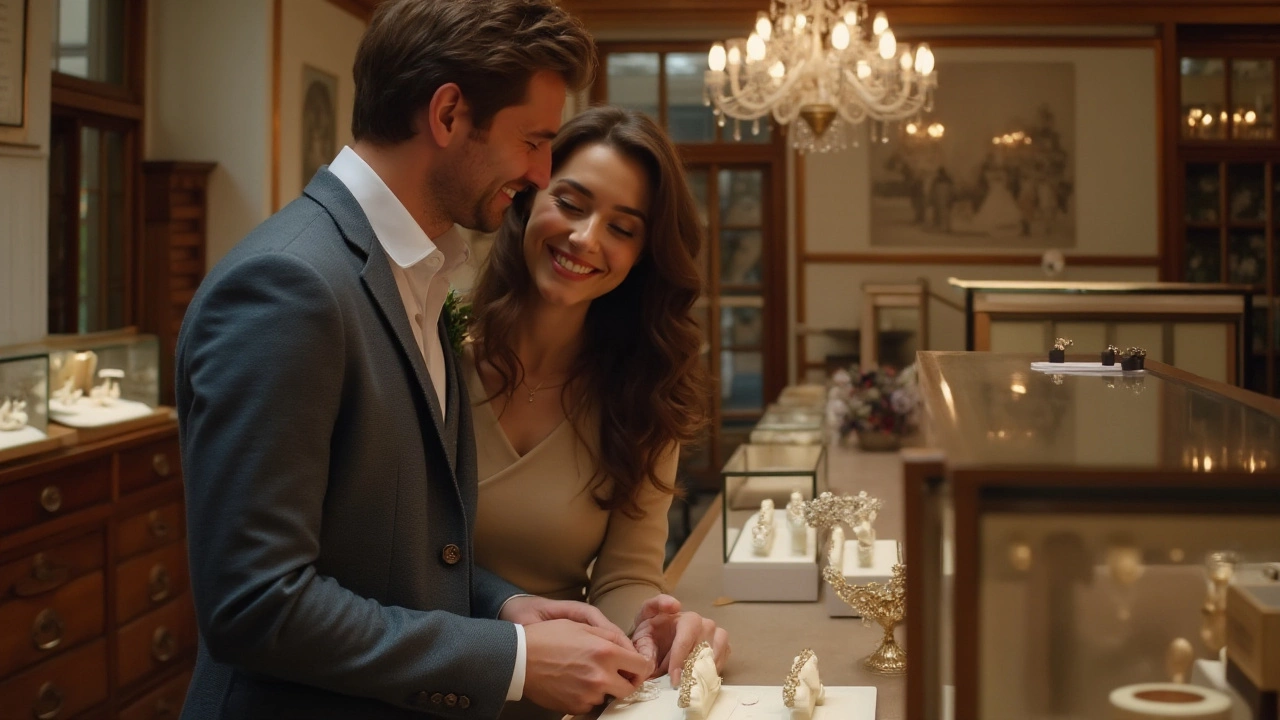Groom's Ring: Everything You Need to Know
Ever wonder why the groom’s ring matters as much as the bride’s? It’s more than a piece of metal – it’s a symbol, a tradition, and a style statement rolled into one.
Whether you’re picking a simple band or a flashy design, knowing the basics helps you avoid buyer’s remorse and keeps the ceremony smooth.
Choosing the Right Style
The first decision is the metal. Gold, platinum, white gold, and even titanium are popular. Gold gives a classic look; platinum is ultra‑durable; titanium feels light and modern. Pick what matches your lifestyle – if you work with your hands, a hard-wearing metal saves future repairs.
Next, think about width. A 3‑mm band looks sleek and is easy to wear daily. Wider bands (5‑6 mm) make a bold statement and pair well with a larger engagement stone. Try both on your finger to see what feels right.Some grooms add subtle details: a brushed finish, a tiny engraving, or a hint of color with rose gold. These touches keep the ring personal without stealing the spotlight from the engagement ring.
If you already have an engagement ring, check how the two will sit together. A matching metal tone (both white gold, for example) creates a seamless look. If you love contrast, a yellow gold band with a white gold engagement stone can be striking.
When to Put It On
Tradition says the engagement ring goes on first, then the wedding band is placed on top during the ceremony. This order makes sense because the wedding band sits closest to the heart.
Different cultures have their own twists. In some places the wedding band is slid on before the engagement ring, or they’re exchanged at a later date. Whatever you choose, just tell your officiant so the timing is clear.
Practical tip: practice sliding the rings together before the big day. If the fit feels tight, a jeweler can slightly enlarge the band or adjust the shape. It’s easier to fix before you’re under the spotlight.
When you’re ready to wear both, the engagement ring sits on the bottom finger and the wedding band on top. Some couples flip the order for comfort, especially if the engagement stone is high‑profile. Feel free to experiment – the right fit is personal.
Don’t forget care. Both rings collect dirt and skin oils. Wash them with warm water, mild soap, and a soft brush once a week. Store them separately in a soft pouch to avoid scratches.
Budget matters, too. A solid gold band costs about £300‑£600, while platinum can run £800‑£1,200. If you’re watching costs, titanium or stainless steel offers durability at a fraction of the price.
Finally, think about future upgrades. Some grooms later add a small diamond line or personalize the inside with a date. Choose a ring that leaves room for those little upgrades without a full redesign.Bottom line: pick a metal that fits your daily life, choose a width that feels comfortable, match (or contrast) it with your engagement ring, and practice the stacking before the ceremony. A well‑chosen groom’s ring not only looks good but also carries the meaning you want it to.
Who Buys the Groom's Ring? A Bride's Guide to Wedding Traditions
In the world of weddings, the question of who buys the groom's ring is often met with various perspectives and traditions. Although traditionally the bride is responsible for selecting and purchasing the groom's ring, more modern couples are finding unique ways to share this meaningful experience. The exchange of rings symbolizes a lifetime commitment, making the choice a significant one. This article explores the historical background, contemporary trends, and practical tips for brides, helping them to navigate this important decision with confidence.
Read more